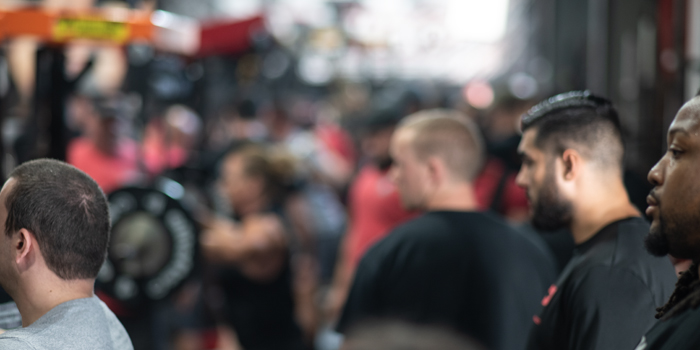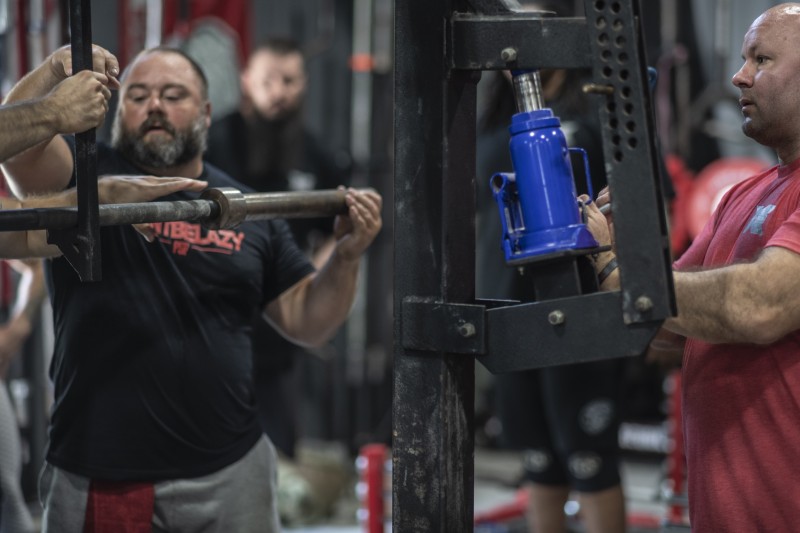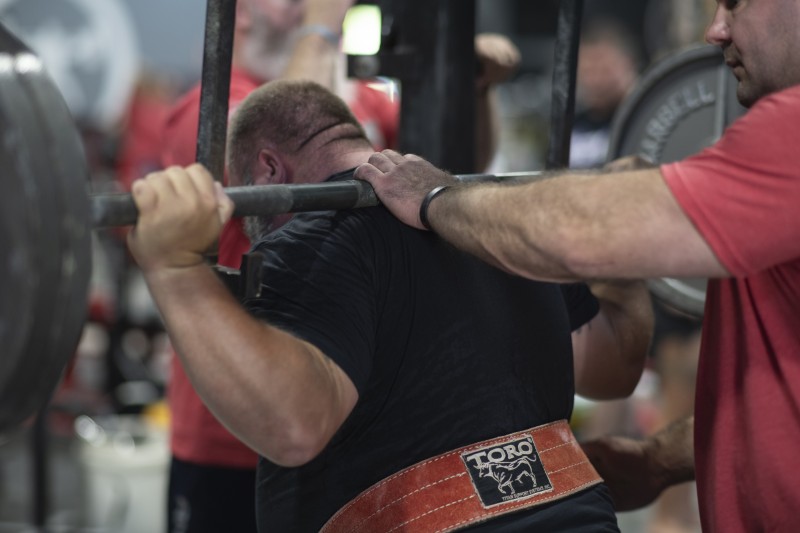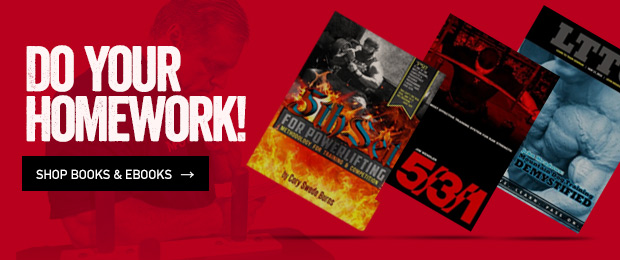
There are a million different ways to train for a powerlifting meet, but many beginning (and even intermediate) lifters fall into common traps during their training cycle that sabotage their performance on meet day.
If you are preparing for your first powerlifting meet or if you are like many lifters who have struggled to have it all come together on the platform, these eight keys can help lay the foundation for a successful competition.
RECENT: Takeaways From My First Strongman Competition
Base Your Goals on the Meet, Not Training Lifts
This especially applies to lifters who are preparing for their first competition. One thing that you will quickly find out is that squatting, benching, and deadlifting over the course of a competition is a lot different than doing it in the gym. If you haven’t competed before, your PRs are zero, zero, and you guessed it, zero. Obviously, you will need to use your best training lifts to help set meet goals and guide your training (percentages, etc.), but this needs to be done wisely.
If you take your best questionably performed lifts that all occurred months apart on days that you felt great and try to open with those weights, you are setting yourself up for disaster. Even lifters who have competed before can start to fall into this trap as they prepare for a meet (I’ve done it before). My best recommendation for this is to test your lifts before starting your training cycle and do so with someone watching you, and they should know the rules and standards of the federation that you’re competing in. Then take those numbers and use 90 percent of them as a training max that you base your training cycle numbers off of. It may seem too light, but that brings us to the next key...
Start Too Light
This is something that Jim Wendler has preached has a key principle of 5/3/1 since its creation, and many other successful coaches emphasize this as well. If you’re setting up a training cycle that is 12 weeks long (three months), you want to build momentum over the course of that time leading up to meet day. Using a training max also accounts for the inevitable ebbs and flows of life stress and circumstances. If you base your entire training cycle off of numbers dependent on being fully rested, healthy, and stress-free with adrenaline at 110 percent, do you think you’ll be able to re-create that for every single training session for three months?

Use a training max to provide yourself the ability to keep building momentum and making progress toward meet day with the good and bad days in mind. A side-note to this is the importance to have a level of auto-regulation built in by your coach or yourself. Strict percentages in a linear-type program still don’t account for days where you need to really back off or when you can take advantage of feeling great. Conjugate training, programs like 5/3/1 and 5thSet, and many other successful training approaches provide some form of auto-regulation, whether it’s in the form of variable rep sets or effort-based intensity levels.
Accumulate Volume
In achieving super-compensation for meet day (which basically means training in a way that after a short recovery period/deload, you are stronger on meet day), success is a fine line between over-reaching (pushing your body further than it’s used to in order to get a response) and over-training (red-lining and burning yourself out so much that your performance suffers on meet day).
WATCH: Table Talk — Deloading with Dave Tate and Joe Sullivan
I think many lifters feel the only way to achieve this over-reaching is by training heavier and heavier leading up to the meet. Obviously, you’ll want to be training heavier and increasing intensity leading up the meet, but if you try to consistently put more weight on the bar for 1RMs the whole training cycle, it can quickly lead to over-training or being a mental mess come meet day.
The training, or work, you accumulate over the course of a training cycle is multi-faceted. Sure, adding weight is the primary way to progressively overload, but you can overload in other ways as well. Increasing total volume, reducing rest time between sets, and pushing for rep PRs are all ways to overload in each training session. The accumulation of moderate/sub-max volume is, in my opinion, a very effective way to progressively overload without attempting to take a new 1RM every single week (which is impossible unless you are an absolute beginner). Accumulating volume over the course of a training cycle, and gradually increasing the total amount of weight you lift in the 60 to 90 percent range can help you effectively over-reach before deloading and meet day.
Use Indicator Lifts and Rep PRs
In continuation of the last key, trying to assess your progress week in and week out with 1RM lifts is a recipe for disaster if you expect to hit PRs each week. It is worth mentioning that there are very effective programs that utilize singles each week, but these programs are not attempting all-time PRs every week. You do want to assess progress throughout your training cycle for the sake of training logistics as well as for mental assurance that you are on the right path. Two ways to do this include indicator lifts and rep PRs/AMRAP sets/rep maxes.
Indicator lifts are movements aside from your competition lifts that indicate you’re getting stronger on your competition lifts. These will vary from person to person, but one example could be that you know when your 3RM to 5RM of the Safety Squat Bar Box Squat goes up, your competition squat and deadlift go up as well. This allows you to strategically place these movements throughout a training cycle to help you get stronger and assess progress. Experienced lifters know that a certain percentage of an indicator lift can predict their competition lift, but this takes a lot of time under the bar)
Rep PRs are a big part of programs like 5/3/1 and allow you to assess progress in the competition lifts by tracking your ability to complete a higher max number of reps at percentages in the sub-max range. Each individual program will do this differently, but it provides another way to push yourself physically and mentally while achieving small victories and gaining confidence throughout a training cycle.

Detach Yourself Emotionally and Trust the Process
I wrote about this in a previous article, but the main thing to consider here is that many lifters fall into the trap of over-thinking and doubting themselves the whole training cycle and make poor decisions as a result.
Obviously small adjustments to training can be made, but once you’ve settled on a strategic plan, trust the process and remember that how strong you feel on any given day is not necessarily reflective of your strength on meet day. I’ll say that one more time:
How strong you feel on any given day is not necessarily reflective of your strength on meet day.
Peak strength is dependent on so many variables that it is crazy to think we’re going to be at peak strength day in and day out. Yet we all fall into that trap at one time or another. Stick to the plan and remember: the body is a dynamic organism with strength as no exception. Honest and smart coaches and/or training partners can be great accountabilities for this.
Practice Technique According to the Federation and Meet Rules
This will vary depending on your training age and competition experience, but in general, you want to be practicing technique according to the federation that you are competing in. The aspects of this can include things such as squat depth, bench pause length, equipment allowed (check approved lists), bench press set-up (better get those heels down for the USAPL), and a host of other things. Make sure you read the rule book and familiarize yourself with the meet you are doing so you can eliminate as many surprises as possible.
Save Your Attempts for the Platform
This was kind of covered in a few previous points, but it’s worth emphasizing. Depending on your program, there are certainly times in a training cycle where you can take maximal training weights, but far too many lifters try and take their planned second and third attempts multiple times leading into a meet — even as close as the weekend beforehand. Remember that the goal of a training cycle is to get stronger and prepare for competition, not prove to yourself how strong you are week in and week out. Trust the process and remember that if you train smart, you will feel dramatically stronger on meet day than you do the week or two beforehand.
Open Light
This has been covered at length by many lifters, and Swede recently wrote an article called Powerlifting Meet Manual, where he provided a great guide on how to select attempts for your competition. Whether you use a coefficient like Swede provides or follow the old adage of “your opener should be something you could hit for a triple even if you felt like crap,” the bottom line should be to open light.
Your opener, especially on squat, provides you the opportunity to get rid of the butterflies (it’s like when once you get hit the first time in a fight, the butterflies disappear real fast), gain confidence (nothing like smoking an opener), and impress the judges.
READ MORE: The Most Important Principle for Strength
The last one isn’t talked about enough. If you barely grind out your opener and your technique is awful, you probably won’t get the benefit of the doubt on a grey-area second attempt. Smoke your opener and remove all doubt from the judges, and they’ll (even subconsciously) go into your second attempt thinking, “This guy/girl knows what they’re doing.”
These are a few keys that can help you have a more successful performance on meet day. Obviously, there are exceptions and variations to all of these concepts, but if you are preparing to start a meet cycle and want to be as successful as possible, consider placing your training cycle within this framework. If you have questions or want to share your meet performance, don’t hesitate to leave a comment below or reach out to me on social media.










